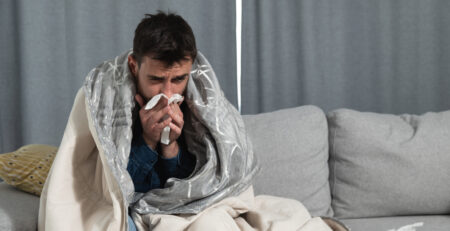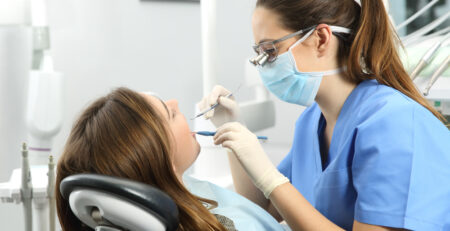The success of anti-aging treatments depends on picking the method that works best for you. If you want to look your best, a dermatologist can help you locate the proper treatments.
Wrinkles and fine lines can be effectively treated with procedures like chemical peels. Facials with LED light treatment are also beneficial for aged skin.
Xeomin and Botox
The injectable wrinkle treatments Botox and Xeomin can make you look older than you are. Both injectables contain botulinum toxin type A, a neurotoxic protein that can temporarily reduce muscle tension and the appearance of fine lines and wrinkles.
In both cases, the injections only take a few minutes and cause no discomfort. You may feel some pinching during the procedure, but you can ask for a local anesthetic to ease the pain. Your doctor or nurse will use a very fine needle to inject Xeomin or Botox into targeted facial muscles. The operation is quick (just a few minutes) and the effects are noticeable quickly (within a few days).
The use of Xeomin and Botox to treat frown lines, forehead creases, and crow’s feet has been approved by the Food and Drug Administration. They are also effective in the treatment of cervical dystonia and blepharospasm, two diseases characterized by spasms of the eyelid muscles.
Xeomin does not have the additional binding proteins seen in Botox, which can lead to the development of antibodies in the body over time. As a result, Xeomin is less likely to elicit an immunological reaction and is commonly referred to as the “naked” version of Botox or “incobotulinumtoxin A.” Due to its lack of these other proteins, Xeomin requires fewer treatments to achieve and sustain anti-aging effects.
Microneedling
Microneedling is a non-invasive, risk-free treatment that can improve skin’s texture, firmness, and the look of fine lines and wrinkles. The collagen synthesis is boosted, which is why it works. In these anti-aging treatments, a handheld device is used to make microscopic holes in the skin of the face. When these microscopic wounds are closed by the body’s natural healing process, collagen production increases. Increased production of elastic skin fibers contributes to the appearance of firmer, more youthful skin.
The process does more than only increase collagen production; it also accelerates your skin’s normal cell turnover rate. This gets rid of age-inducing flaws including dark spots and light photodamage.
Collagen is an essential protein for supple skin. However, your body makes less and less of it as you get older. Reduced collagen production is a major contributor to the sagging skin that comes with aging. Microneedling can increase collagen production, which in turn restores your skin’s youthful appearance and texture.
The therapy is effective not only for minimizing the appearance of fine lines and wrinkles, but also of enlarged pores and stretch marks. To get the most out of this therapy, though, you will need to commit to a series of sessions. In addition, you shouldn’t use it if your skin is infected, irritated, or sunburned.
The Anti-aging Magic of Dermal Fillers
Gel-like compounds called dermal fillers are injected under the skin to fill in wrinkles, creases, and other depressions in the face, making the face look younger and fuller. Restylane, Juvederm, and Radiesse are all dermal fillers that have been approved by the Food and Drug Administration.
Treatments with dermal fillers involve negligible risk to the patient. Before injections are made, an anesthetic cream is usually put to the treatment area to numb it. Typically, the process takes between 30 and 45 minutes. The results of a dermal filler procedure might last anywhere from six months to a year.
Most dermal fillers are absorbed by the body after injection. Polymethyl methacrylate (PMMA) beads, on the other hand, are not absorbed by the body and can have long-lasting effects.
Dermal fillers are used by cosmetic surgeons to treat a wide range of facial issues, including hollowing of the cheekbones and jawline, thin lips, and dark circles beneath the eyes. The nose, the chin, and the jawline are just some of the traits they can improve.
Before getting dermal fillers, it’s crucial to have an in-depth conversation with your cosmetic surgeon about your medical history. Certain medical conditions and medications, such as blood thinners or NSAIDs, can increase the likelihood of bruising, which can compromise your safety and treatment success.
In addition, picking a doctor who has extensive knowledge of dermal filler procedures, anatomy, and complication management and is registered with a health professional system is essential.
Treatment Using Lasers
In order to treat skin flaws, such as scars, discolouration, and uneven texture, lasers aim brief, concentrated pulses of light energy at the problem areas. They are well-equipped to deal with a wide range of concerns, so going to them is a good idea. However, they work best on wrinkles and other fine lines, as well as pigmentation and texture issues.
In order to reverse the effects of aging without injuring the skin’s surface, low-energy lasers are used in nonablative laser treatments. Damage from the sun, wrinkles, stretch marks, and rosacea can all be treated with this method.
There are two modes of operation for ablative lasers like CO2 laser resurfacing. They warm the skin’s outer layers, causing microscopic damage that stimulates the body to produce an abundance of collagen and elastin to repair the damage. The end effect is skin that is more elastic, less wrinkled, and appears younger.
Recovery time is shortened, and unpleasant side effects like redness, itching, and swelling are less likely to occur when using fractional lasers, which divide large sections of skin into several smaller areas to target just specific problem areas. They don’t significantly damage the surrounding tissue like ablative lasers do, so you can get back to your regular routine practically soon.
DISCLAIMER: This page is intended as a broad guide to anti-aging treatments and is in no way meant to replace the advise of a physician. Before deciding on any sort of medical treatment, you should talk to a doctor. Neither the writer nor the publisher will be held responsible for any adverse outcomes.










